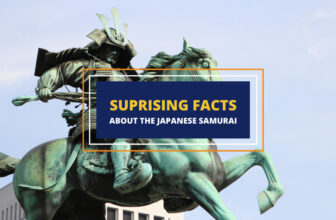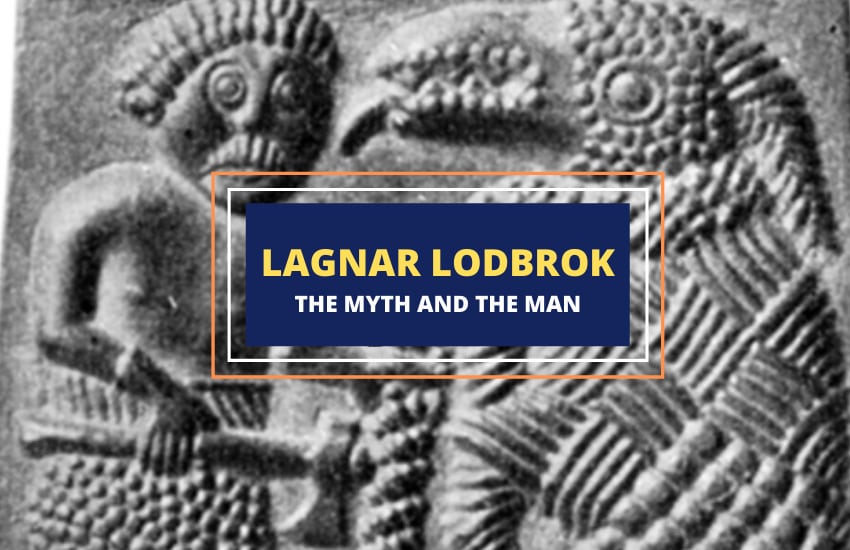
Table of Contents
Ragnar Lodbrok is simultaneously one of the most famous Viking heroes and a person so shrouded in mystery that historians are still not sure who he was.
A hero of Scandinavia, a scourge to both England and France, as well as a father to the legendary Heathen Army, Ragnar has had as many adventures as he’s had wives and sons. The legendary hero is mentioned in the poetry of the Viking Age and Icelandic sagas.
But who exactly was Ragnar Lodbrok, and can we somehow peel the fact from fiction? Here’s what we know about both the myth and the man.
Who Was Ragnar Lodbrok Really?
Like many other legendary figures from myths and cultures across the world, Ragnar Lodbrok’s history is more of a puzzle than anything else. Historians and scholars have been compiling accounts from numerous Frankish, Anglo-Saxon, Danish, Icelandic, Irish, Norman, and other sources from the Middle Ages.
Such accounts detailed the lives of different men, all bearing names similar to Ragnar and Lodbrok. It’s all but certain that they are not all Ragnar Lodbrok, but a lot of the accounts do coincide with what we’ve read about the man from mythic sagas such as the Saga of Ragnar Lodbrok, Tale of Ragnar’s sons, Hervarar Saga, Sögubrot, and Heimskringla written around the 13th century – four centuries after Ragnar’s life and death.
That, plus the much more trustworthy historic documents we have of Ragnar’s (supposed) sons has given us a half-decent idea as to what the man’s life might have looked like.
Ragnar Lodbrok’s Family Life
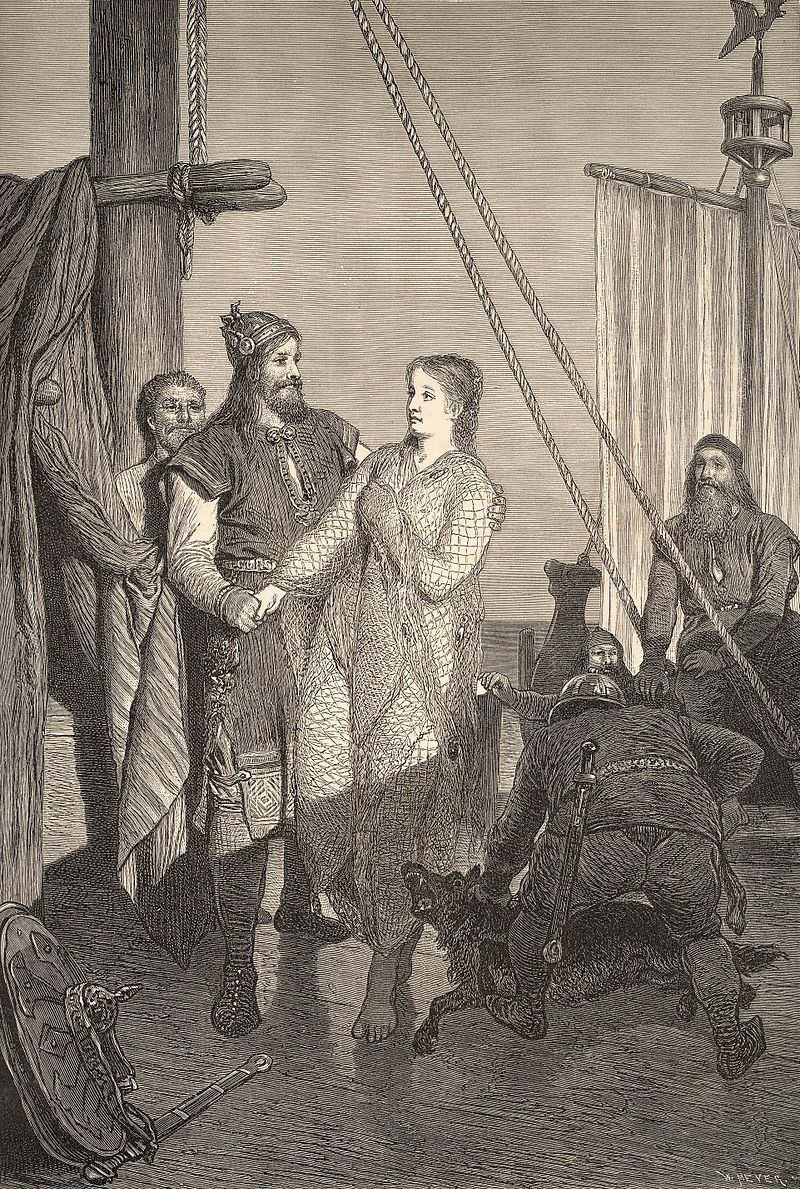
The man we now know as Ragnar Lodbrok, Ragnar Lothbrok, or Regnerus Lothbrogh, likely lived around the beginning or middle of the 9th century. He is said to be the son of the legendary Swedish king Sigurd Hring. Ragnar is believed to have had at least three wives, although the sagas talk about more than that. One of those wives was likely the legendary Aslaug (or Svanlaug, also known as Kráka).
He is also said to have married the most famous of his shieldmaidens, Ladgerda (or Lagertha), as well as Thora Borgarhjort, the daughter of the Swedish king Herrauðr, as well as a few other unnamed women.
From these wives, Ragnar had several unnamed daughters and quite a few sons, most of whom are real historical figures. Although it’s not perfectly clear if all of them were really his sons or just famous warriors who claimed to be his sons, for most of them the timing and locations seem to match.
The men believed to be Ragnar’s son are Björn Ironside, Ivar the Boneless, Hvitserk, Ubba, Halfdan, and Sigurd Snake-in-the-Eye. He is also said to have had sons named Erik and Agnar from Thora. Of those, Hvitserk is the son historians are the least certain about, but most of the others seem likely to indeed have been the hero’s sons.
Ragnar Lodbrok’s Conquests
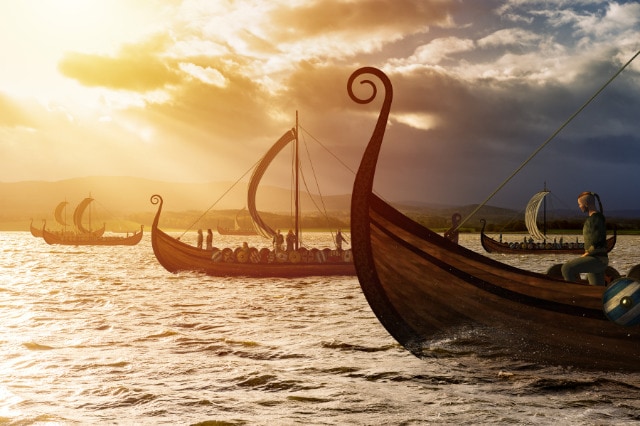
There are many myths about Ragnar’s fantastic adventures and conquests, but the actual historical evidence is scarce. Still – some evidence does exist. Fairly reliable Anglo-Saxon chronicles talk about a Viking raid on England in 840 AD. The raid was done by a man called Ragnall or Reginherus, who historians believed was Ragnar Lodbrok.
Such differences in the names are quite normal for the time period as the scholars at the time didn’t exactly have a way (or the urge) to translate and sync their terminology. For example, one of Ragnar’s most famous sons Ivar the Boneless is also known as Imár of Dublin.
After sacking multiple settlements on the English coast, Ragnar is believed to have sailed south, to Francia, modern-day France. There, he’s believed to have been given both land and a monastery by king Charles the Bald to satiate the Viking’s hunger for conquest. It didn’t really work, however, as Ragnar is said to have sailed south on the river Seine and besieged Paris.
Unable to repel the Vikings’ siege, the Franks paid them off with 7,000 livres of silver – approximately two and a half tons of silver which was a ludicrously high amount for the time.
The sagas do make several claims about Ragnar conquering Norway and Denmark too and unifying them under his rule. However, the historic evidence is scarce on that. While it is true that various Scandinavian kings and warlords made treaties and/or conquered each other at the time, as well as that many of them conducted raids together, none really managed to conquer and unify all of Scandinavia.
The Colorful Mythology of Ragnar Lodbrok
The mythology of Ragnar Lodbrok covers all of the above as well as various other stories and legends that can’t be confirmed historically. In fact, all of the above is a part of the mythology of the character as it’s written in the sagas that way. These are just the aspects that seem historically plausible.
As for the even more historically implausible and fantastic stories told about Ragnar, here are a few of them:
Killing a Giant Snake
Ragnar killed a giant snake (or two giant snakes, according to some legends) that was placed to guard Thora Borgarhjort, the daughter of Herrauð, the jarl of Geats in southern Sweden.
Ragnar managed this feat thanks to his unusual legwear which earned him the nickname Lodbrok or “hairy breeches” or “shaggy breeches”. That’s right, Lodbrok likely wasn’t even the man’s real name, that’s how difficult it is to figure out who he really was.
A Second Voyage to England
Ragnar is also said to have sailed to conquer England a second time, but with only two ships. According to the sagas, Ragnar did this because he knew he was prophesied to be surpassed in greatness by his sons.
So, he wanted to thwart the prophecy and prove himself as the greatest Viking hero of all time. However, he was defeated by King Aella of Northumbria who then threw him into a pit full of venomous snakes. While King Aella did exist historically, this story seems to be a myth.
Kingship Over Denmark
The famous Danish chronicle, Gesta Danorum, states that Ragnar was given kingship over all of Denmark after the death of his father Sigurd Hring. In this source, Sigurd was a Norwegian king, not a Swede, and he was married to a Danish princess.
So, after Sigurd’s death in battle, Ragnar became a king of Denmark and not just of his father’s lands. The Gesta Danorum also says that Ragnar then waged a successful war on the Swedish king Frö for killing his grandfather Randver, himself a Danish king.
If all this sounds confusing, it’s because it is. According to the Gesta Danorum, Ragnar was at one point a ruler of large parts of Norway, Sweden, and Denmark. And while the Gesta Danorum is a reliable source that much of Danish history is based on, this account of Ragnar’s life is contradicted by some other sources.
Legendary Seafaring Conquests
Other accounts in the Gesta Danorum claim that Ragnar’s seafaring conquest extended to much more than just England and Frankia. He is also said to have had successful expeditions against the Saami people of Finland and conducted raids all the way over Scandinavia in the legendary Bjarmaland – a territory believed to be on the coast of the White Sea in the Arctic north, to the east of Scandinavia.
There, Ragnar had to fight Bjarmaland magicians who caused horrible weather that killed many of his soldiers. Against the Saami people in Finland, Ragnar had to deal with archers on skis, attacking his men from the snowy slopes.
Ragnar’s Famous Sons
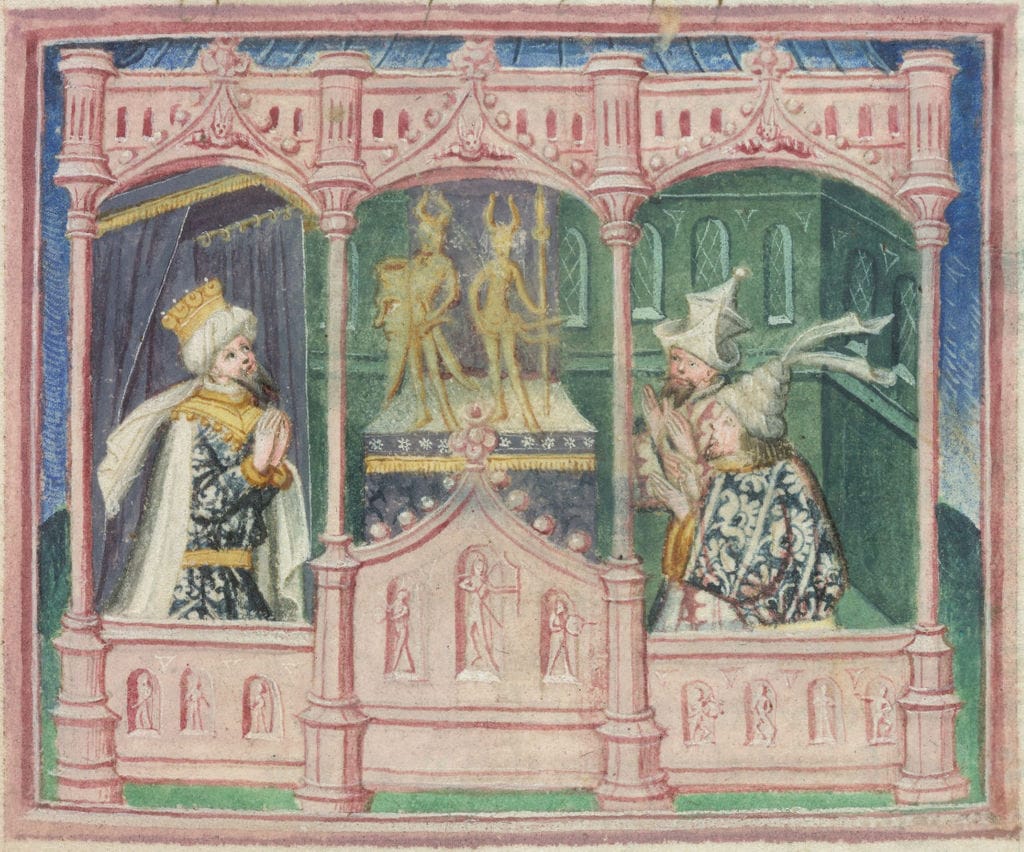
When it comes to Ragnar’s sons, there’s much more credible written history to be read in addition to all the sagas. In that sense, it can be said that the prophecy of Ragnar’s legacy came true – Ragnar’s sons did become more famous than their father. However, interestingly, Ragnar is famous for that as well today.
Either way, there’s a lot that can be said about Ragnar’s sons. Ivar the Boneless, Bjorn Ironside, and Halfdan Ragnarsson are especially famous and well-known historical figures.
Ivar the Boneless
Ivar the Boneless is famous for leading the Great Heathen Army in its assault on the British Isles together with several of his brothers, namely Halfdan and Hubba (or Ubbe). Unlike other attacks, this army wasn’t a mere raiding party – Ivar and his Vikings had come to conquer. The brothers were allegedly motivated to also avenge the murder of their father.
The army landed in East Anglia before swiftly moving through the kingdom with little resistance and attaching the northern kingdom of Northumbria. There, they besieged and captured the capital city of York in 866. Both king Aelle and the previous king of Northumbria Osbert were killed a year later in 867.
After that, the army moved onto the kingdom of Mercia, taking its capital Nottingham. The remaining forces of Mercia called upon the kingdom of Wessex for help. Together, the two kingdoms pushed the Vikings back to York. From there, subsequent Viking campaigns sought to take Mercia and Wessex unsuccessfully while Ivar himself went to Scotland and, from there – to Dublin, in Ireland.
In Ireland, Ivar eventually died in 873. At the time he was sporting the title of “King of the Norsemen of all of Ireland and Britain”. As for his previous nickname “The Boneless”, it’s actually not clear what the reason behind it is. Historians speculate that he might have had a hereditary skeletal condition called Osteogenesis Imperfecta, known as Brittle Bone Disease. If so, Ivar’s military achievements become even more noteworthy.
Whatever the case, Ivar’s Great Heathen Army didn’t just conquer most of Britain but started two long centuries of continuous and bloody Viking war and conquest on the British Isles.
Bjorn Ironside
While in theHistory Channel’s hit show Vikings Bjorn is portrayed as the son of the shieldmaiden Lagertha, most historic sources claim that he was the son of either of Ragnar’s two other wives – Aslaug or Thora. Either way, Bjorn was famous as a fierce and powerful warrior, hence his nickname – Ironside.
Through most of his raids and adventures, he was said to have avoided leading but instead focused on supporting either his father Ragnar or his brother Ivar. Different sources have him invading not only the British Isles but also the coasts of Normandy, Lombardy, the Frankish Kingdoms, as well as several towns further south into central Europe on the road to Rome.
Bjorn was also given lordship of both Sweden and Norway after his father’s death (or before it). His time and place of death are completely unknown, and we also know little of his family – only the 13th-century work Hervarar saga ok Heiðreks claims that Bjorn had two children, Eirik and Refil.
Halfdan Ragnarsson
The third most famous of Ragnar’s sons, Halfdan was also a part of the Great Heathen Army that took Britain by storm. After Ivar moved north to Scotland and then Ireland, Halfdan became the king of the Danish Kingdom of York.
After Northumbria’s conquest, however, Halfdan’s story becomes a bit unclear. Some sources have him waging war down the River Tyne with the Picts and the Britons of Strathclyde. Others claim that he joined Ivar on his conquest in Ireland and died near Strangford Lough in 877. And then others claim that he remained in York for years to come.
The Many Deaths of Ragnar Lodbrok
There are several different theories about Ragnar’s death but no consensus on which was the most likely.
1- Pit of Snakes
The most famous one involves the pit of snakes he was thrown in by the Northumbrian King Aelle. This theory is not only fascinating and unique, but it also seems supported by the subsequent invasion of Northumbria by Ragnar’s sons. It also seems poetic given his fabled battle with the giant snakes to win his first wife Thora.
At the same time, however, there’s zero historical evidence to support the idea that Ragnar and Aelle ever really crossed paths. On the contrary – historically, it seems almost certain that these two figures never met, let alone one killing the other.
2- The Curse of God
Another theory comes from Frankish sources. According to them, after the siege of Paris and the bribe of 7,000 livres of silver, God cursed Ragnar and his Danish army, and the king died together with most of his army from a mysterious plague.
This also seems to be more of a myth than history – probably wishful thinking on the part of the Frankish scholars. It is possible that a disease had wiped out some Danish warlord at some point and the story was ascribed to Ragnar Lodbrok.
3- Death in Ireland
The third, least unique, and most historically likely theory is that Ragnar died somewhere in Ireland or in the Irish Sea somewhere between 852 and 856. This is claimed by the Danish historian and writer of the Gesta Danorum – Saxo Grammaticus.
According to him, Ragnar attacked the eastern shores of Ireland in 851 and established a settlement near Dublin. He then continued raiding the east coast of Ireland and the northwest coast of England for several years before his death. Whether that came in the sea, in battle, or in peace is unclear.
Ragnar Lodbrok in Modern Culture
Today, Ragnar Lodbrok is best known for the portrayal of him in the hit TV series Vikings by the Australian actor Travis Fimmel. The show is both loved and hated for its mix of historical facts and fiction. However, that’s pretty much what we know of Ragnar anyway. The show recreates his first campaign in England, his raids in France and siege of Paris, as well as his supposed death in a pit of snakes.
The show also skips his first marriage with Thora and portrays his marriage with the shieldmaiden Lagertha as a loving one rather than forced as it seems to have been historically. His second wife, Aslaug, is portrayed as a mysterious and mythical beauty – more or less how she’s portrayed in the sagas too. The show continues after Ragnar’s death with adaptations of the stories of Ragnar’s sons.
Other popular sources that have tried to tell Ragnar’s story include Edison Marshall’s novel The Viking from 1951, Edwin Atherstone’s 1930 novel Sea-Kings in England, Richard Parker’s 1957 novel The Sword of Ganelon, the 1958 film The Viking based on Marshall’s novel, Jean Olliver’s 1955 comic book Ragnar le Viking, and many others.
Ragnar’s sons are also portrayed in the famous video game Assassin’s Creed: Valhalla, conquering and reigning over 9th century England.
Wrapping Up
As a legendary Viking hero, Ragnar Lodbrok remains a mystery, with no historical consensus on who he was, his family, or his death. Facts and fiction are mixed up in tales of Ragnar Lodbrok, and many versions exist of his life.





